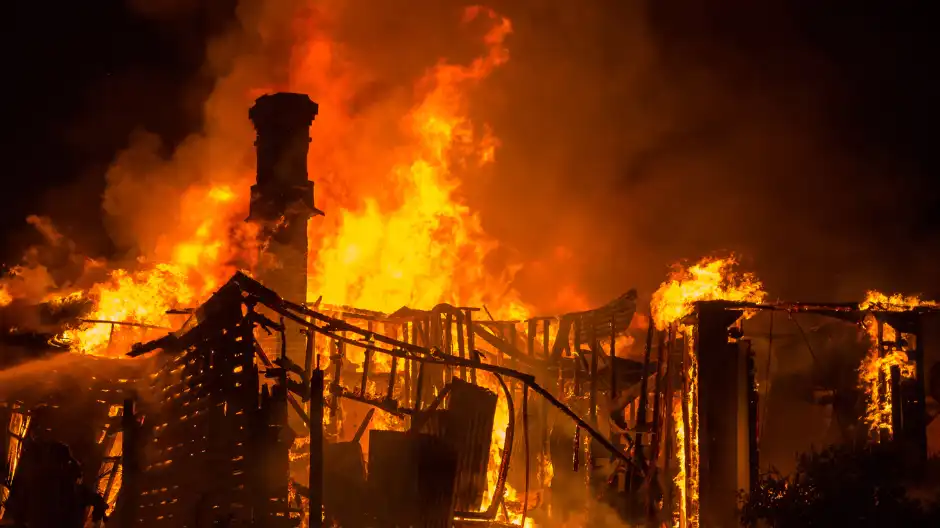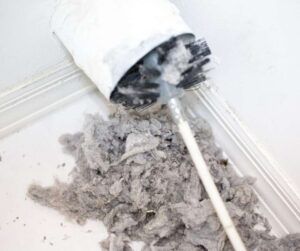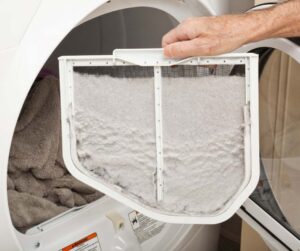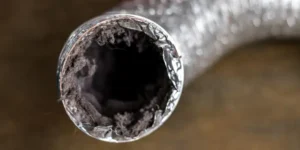Are clogged dryer vents genuinely a fire hazard, or is this simply an overstated worry? It might surprise many homeowners that one of the most common sources of household fires is the dryer vent. With lint build-up and restricted airflow, a clogged dryer vent can indeed be a dangerous fire hazard.
According to safety experts, taking a proactive approach to dryer vent maintenance is critical for protecting your home and family from these risks. This article explores the real dangers associated with clogged dryer vents and the steps you can take to prevent fires.
How Dryer Vents Become Clogged
Dryer vents are essential to your dryer’s function, expelling warm, moist air and lint outside the home. However, dryers are particularly susceptible to clogging, as each drying cycle produces lint, hair, and dust. Here’s how clogging typically happens:
- Lint Accumulation: With every load, small fibers detach from fabric, accumulating in the lint trap and vent.
- Restricted Airflow: As lint and debris collect, the vent becomes narrower, reducing airflow and forcing the dryer to work harder.
- Extended Drying Cycles: When vents are clogged, clothes take longer to dry, contributing to further lint build-up.

Even with regular lint trap cleaning, lint particles can easily escape into the vent, which accumulates over time. Without periodic maintenance, these particles can restrict airflow and lead to dangerous overheating, which is why clogged dryer vents are considered a fire hazard.
Fire Risks Associated with Clogged Vents
The flammable nature of lint makes clogged dryer vents particularly risky. When lint builds up and airflow is restricted, the dryer can overheat, making a fire more likely. Here’s why clogged vents are a major safety risk:
- Lint as a Flammable Material: Lint is composed of tiny fabric fibers, making it extremely combustible. When exposed to excessive heat, lint can ignite easily.
- Overheating Dryer Parts: The restriction of airflow causes the dryer to work harder, which may lead to overheating of internal components.
- Backed-Up Heat in Vent Lines: When vents are clogged, heat has nowhere to go, creating a dangerous environment for ignition.

Statistics and Case Studies
The U.S. Fire Administration (USFA) reports that approximately 2,900 residential dryer fires occur in the United States each year. These result in about 5 fatalities, 100 injuries, and $35 million in property losses. Notably, lint buildup is cited as the primary cause, responsible for about 31% of these fires due to neglected vent cleaning and maintenance. Source: U.S. Fire Administration
The U.S. Consumer Product Safety Commission (CPSC) highlights that lint buildup contributes to roughly 15,500 dryer fires annually, which lead to 10 fatalities, 310 injuries, and property damages exceeding $84 million. Proper maintenance, especially lint removal, can prevent these overheating events and drastically reduce fire risks Source: Consumer Product Safety Commission
Nearly 54% of dryer fires are contained within the appliance itself, but when they spread, average losses can exceed $40,000. This cost escalation shows the importance of regular vent cleaning to prevent fires from spreading and causing extensive damage. Source: U.S. Fire Administration
Regular dryer vent cleaning is not only a safety measure but a cost-saving practice that can prevent these largely avoidable losses.

Signs of a Potential Fire Hazard in Your Dryer Vent
Recognizing the signs of a clogged or unsafe dryer vent can save you from a potential fire hazard. Here are some warning signs to look out for:
- Extended Drying Times: If your dryer takes longer than usual, this may indicate that lint is obstructing the airflow.
- Burning Smell: A hot, burning odor coming from the dryer could be a sign of overheating, likely caused by lint buildup.
- Hot Dryer and Clothes: If your dryer and clothes are unusually hot at the end of a cycle, airflow may be restricted.
- Visible Lint Buildup: Excessive lint around the dryer vent opening or trap area can signal an internal clog.
Preventative Steps to Avoid Fire Hazards
Preventing a dryer vent fire hazard requires regular maintenance and simple, proactive measures. Here’s how to keep your dryer vent safe and functional:
- Clean the Lint Trap After Every Load: A clear lint trap allows better airflow and reduces lint accumulation in the vent.
- Inspect Vent Lines Regularly: Check for blockages or signs of buildup to keep vents functioning effectively.
- Schedule Professional Cleanings: Hiring a professional service like Dryer Vent Rite ensures that your vents are thoroughly cleaned, significantly reducing the risk of a fire.
- Check for Proper Ventilation: Confirm that the vent is installed correctly and that it leads outside, as improper installation can increase fire risks.
- Install a Lint Alarm: These devices can alert you when airflow is restricted, helping prevent build-up and overheating.
Schedule a Cleaning Today!
In summary, clogged dryer vents are indeed a serious fire hazard, particularly for homes in North Denver where winter brings increased dryer usage and closed windows that restrict ventilation. Regular maintenance is essential for both efficiency and safety. Read more in our article, the Importance of Winter Dryer Vent Maintenance in North Denver.
By scheduling a professional dryer vent cleaning with Dryer Vent Rite, you’re taking a significant step toward preventing fire risks in your home. Don’t wait until it’s too late—protect your home by contacting Neil at DryerVentRite today at (720) 914-3050 or visiting our Request a Quote page.
Frequently Asked Questions – Dryer Vent Fire Hazards
It’s recommended to clean your dryer vent at least once a year. However, if you use your dryer heavily or notice signs of a clog (such as longer drying times or a burning smell), more frequent cleanings may be necessary to ensure safe and efficient operation.
Common signs of a clogged dryer vent include extended drying times, clothes feeling unusually hot at the end of the cycle, a burning odor from the dryer, and visible lint buildup around the vent or trap. If you notice any of these, it’s best to address them promptly.
Yes, a clogged dryer vent can lead to a fire. Lint buildup restricts airflow, causing the dryer to overheat. This overheating, combined with the highly flammable nature of lint, creates a real fire hazard. According to the U.S. Fire Administration, thousands of dryer fires occur each year due to neglected vent maintenance.
Cleaning the lint trap after every load helps but isn’t sufficient to prevent a vent clog. Tiny lint particles still make their way into the vent over time. Regular vent cleanings, in addition to cleaning the lint trap, are essential to ensure safe and efficient dryer performance.
Professional dryer vent cleaning is recommended because it ensures a comprehensive removal of lint and buildup. Experts have specialized tools that can reach deeper into the vent system and eliminate hidden clogs, which are difficult to address with DIY methods. This cleaning minimizes fire hazards and extends dryer efficiency.
Preventative steps include cleaning the lint trap after each load, ensuring the vent line is properly installed and free of bends, and scheduling regular professional vent cleanings. Additionally, a lint alarm can alert you when airflow is restricted, helping prevent clogs before they become hazardous.



